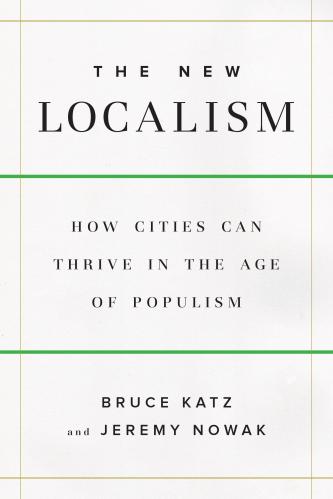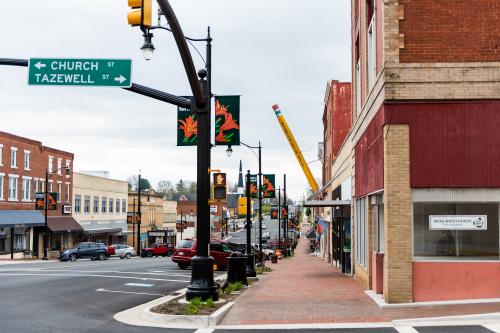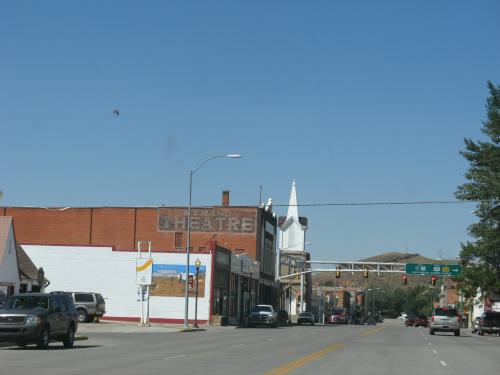Louis Hyman’s recent piece in The New York Times Sunday Review, The Myth of Main Street, presents a bleak choice for rural and rust-belt America: persist in hopeless efforts to rebuild your downtown or graciously accept a future of telecommuting for a distant corporation. The former he decries as nostalgia; the latter as the only economically viable option. But this offer is a false choice: there is another way for smaller communities to compete in today’s economy and we believe a strong main street strategy is at the heart of it.
It is true that main streets have been battered in recent decades. Big-box and internet retail paired with the globalization of production have exposed communities to unprecedented competition. Sprawling development and migration have emptied out many small downtowns. Yet far from a myth, some main streets are thriving. These communities leverage the density of older and historic buildings, educational institutions and community and cultural facilities in their town centers to attract investment and bring renewed vitality to once hollowed-out downtowns.
Decades-old prognostications about how the internet would make location obsolete have failed to come true; place matters more than ever. That’s as true in rural and midsized towns as it is in the largest of cities, all of which are competing to attract talented workers and global capital. One company town learning that lesson is Bentonville, Arkansas, (pop 40,000) home to Wal-Mart, one of the very companies implicated in main street’s demise, and which is now investing in revitalization of the historic downtown as a talent attraction strategy. In 2009 Dubuque, Iowa, (pop. 58,000) successfully attracted an IBM service center to a historic downtown building, bringing 1300 quality jobs, in part because of that community’s investment in downtown and quality of life for residents.
Creating thriving small and mid-sized towns is, of course, no small task. It requires local leaders, business owners, and community residents to come together to identify their assets, strategically situate themselves in their regional economy, and develop a shared vision and identity to sell to the world. Communities make this vision a reality by creating quality public spaces, prioritizing local entrepreneurship, emphasizing production, and supporting downtown housing.
Activating public space creates a sense of excitement and provides the momentum to sustain long-term revitalization efforts. Affordable and easily implementable projects range from the installation of crosswalk art, to community movie nights, to the addition of movable seating along sidewalks. All of these endeavors encourage folks to get out, linger in, and support their downtown.
Thriving main streets also foster entrepreneurship by identifying and supporting existing or would-be business owners. Local revitalization efforts clear the path for entrepreneurs, connecting them with financing, space, training, and other resources. Emporia, Kansas (pop. 25,000) is just one such example, having launched or expanded its 70th small business in the last 15 years thanks to an innovative revolving fund and hands-on education for business owners.
The most successful towns understand they cannot build a sustainable economy solely based on consumption; communities must nurture production and innovation. In Erie, PA, (pop. 101,000) the downtown expansion of Erie Insurance anchors a planned cluster of data science and cyber-security activity. Roanoke, VA (pop. 98,000) has become an Appalachian success story by turning old railroad yards into a biomedical research campus near its growing downtown.
And while not every town can cultivate such advanced industries, smaller-scale manufacturers can bolster local economies and enliven main streets. In Leadville, Colorado (pop. 2600), Melanzana Outdoor Clothing is booming as a small manufacturer of specialty clothing. In Water Valley, Mississippi (pop. 3300), the Yalobusha Brewing Company produces ale out of an old building on main street, and sells their products regionally. These businesses—and thousands of others—benefit from a growing consumer preference for American-made and artisanal goods, and contribute directly to the health of their downtowns.
Finally, downtown housing is essential. The same factors that motivate Millennials and Boomers to live in walkable, mixed use neighborhoods in big cities are driving these populations to locate downtown in smaller towns. Investing in housing helps to retain, and in some cases attract, the old and the young, and it creates more pedestrian traffic to support retail, dining and service storefronts. Towns like Mt. Vernon, Iowa (pop. 4600) have revitalized their downtowns in part by converting upper-stories along Main Street into housing.
Hyman is right to encourage local leaders to identify and value the existing skills of their workforce; it is likely that these skills are undervalued and underleveraged. But he wrongfully dismisses the broader economic and place-based assets that exist in main streets. With many federal programs that support struggling places, such as Community Development Block Grants or the Appalachian Regional Commission, threatened in the President’s budget, now is the time for communities to act locally and maximize the value of their places.
The Brookings Institution is committed to quality, independence, and impact.
We are supported by a diverse array of funders. In line with our values and policies, each Brookings publication represents the sole views of its author(s).











Commentary
The reality of main street
April 20, 2017